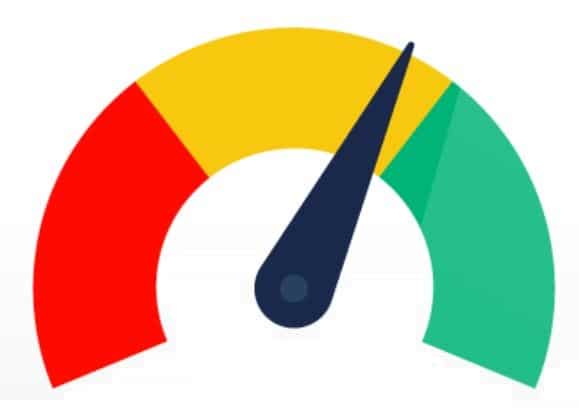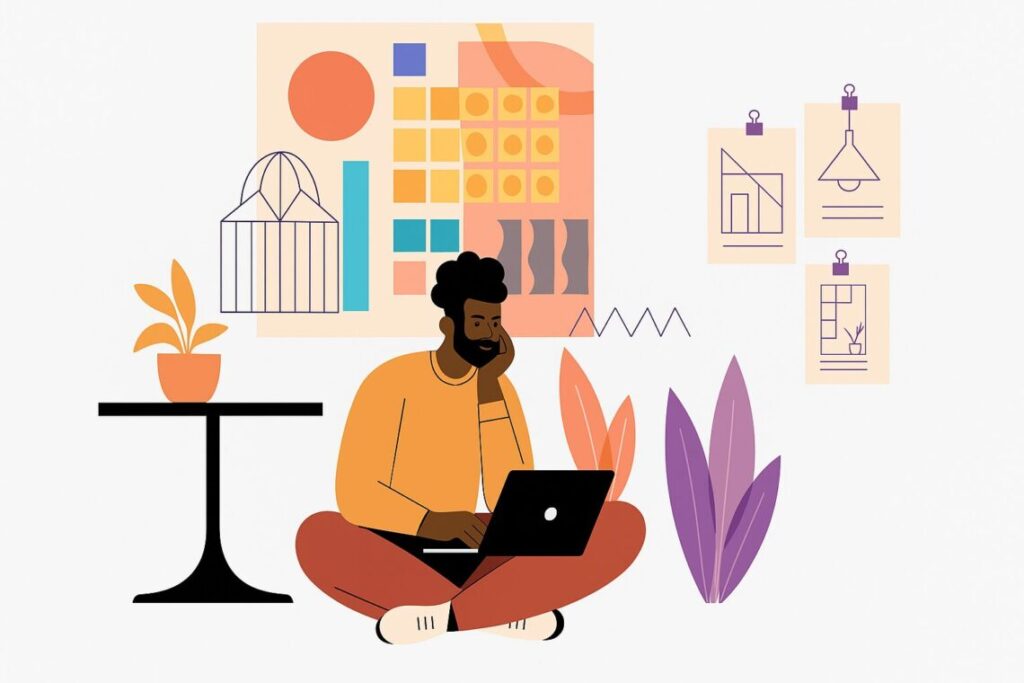
SEO (Search Engine Optimization) effectively increases your website’s organic traffic and attracts valuable leads who are more likely to buy your product or service. For Interior Design SEO, continuously optimizing your website and content is very important as the online search for interior design companies and architects continues to grow. Online interior design services have grown by 15% annually in recent years as published on Worldmetrics.org showcasing opportunities for online growth for the interior design industry.
Staying ahead of competitors is also accomplished by showing more of your work and designs online, allowing clients to have a glance at what you provide. Maintaining a professional portfolio acts as a dynamic showcase of your best work, allowing potential clients to see the quality, style, and scope of your projects. For interior designers, architects, and roofing companies, visual evidence of past projects is often more persuasive than any written description.
This guide will introduce you to essential strategies and techniques for implementing SEO in the interior design industry, with insights applicable to architects and roofing companies. From understanding the basics of keyword research to implementing advanced local SEO tactics, this guide is designed to empower you with the knowledge and tools needed to elevate your online presence as an interior designer, architect, or even a roofing company!
What is Interior Design SEO and Why Is It Important?
Interior Design SEO (Search Engine Optimization) refers to the strategic process of optimizing a website to rank higher on search engines like Google for keywords relevant to interior design. This involves using targeted keywords, creating high-quality content, and implementing technical SEO practices to rank higher in search results. By appearing at the top of search engine results pages (SERPs), your chance of getting viewed by the targeted audience is higher and therefore increasing business opportunities.
Beyond driving traffic, SEO builds credibility and trust by providing a well-optimized website with valuable content, fast loading speeds, and a user-friendly design. For industries such as interior design and home remodeling, where visual appeal and personal connection are key, a strong SEO strategy reflects your brand’s quality and expertise, enhancing the likelihood of engagement and conversion.
Keyword Research for Interior Design and Roofing Company SEO
Keyword research is an important component of Interior Design SEO, as it allows you to uncover the specific terms and phrases potential clients use when searching for interior design or home remodeling services. This process starts with brainstorming and searching for key terms and phrases that match your content’s topic to identify relevant keywords with high search volume, low competition, and strong relevance to your niche. Effective keyword research not only highlights popular search terms but also reveals the intent behind them, helping you tailor your content to what users are actively seeking.
To make the keyword research process simpler for you, here are some key points to consider for your next search:
Understanding User Intent
Informational Intent: Users are looking for information or answers to questions. For example, someone searching “how to choose an interior designer” is in the informational stage and is seeking guidance rather than making an immediate hiring decision. Similarly, a search like “best materials for flat roofing” indicates a user looking for detailed insights, useful for roofing companies SEO specialists to target.
Navigational Intent: This intent is when users are trying to find a specific website or page. For instance, a search like “XYZ Architects website” shows navigational intent as the user is looking to directly access a specific company’s website. Interior design firms, roofing companies, and architectural firms should ensure their brand name ranks well for such navigational queries to capture this traffic.
Transactional Intent: Here, users are ready to take action, such as booking a service or making a purchase. A search like “book a consultation with a roofing contractor SEO consultant in Geneva” demonstrates transactional intent. For interior designers, a search like “buy modern interior design packages” shows that the user is prepared to commit to a service.
Commercial Intent: Users with commercial intent are in the research phase but leaning towards a purchase or hiring decision. For example, “Interior design in Zurich” indicates a commercial intent where the user is comparing options before selecting a service provider. Similarly, “affordable interior design services near me” suggests that the user is exploring various providers to find the best fit.
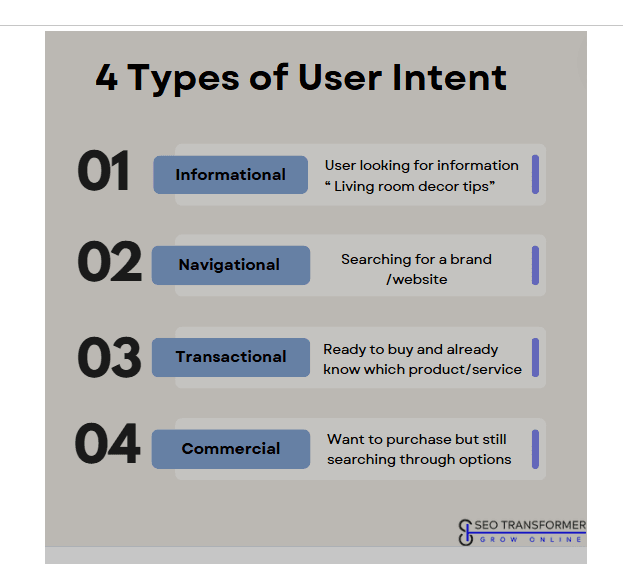
Types of Keywords
When developing an SEO strategy for interior designers, roofing companies, and architects, it’s essential to understand the types of keywords and how to use them effectively to target potential clients at various stages of their search journey.
Short-Tail Keywords: Brief, general keywords with high search volume but high competition (e.g., “interior design”).
Long-Tail Keywords: More specific, longer phrases that have lower competition and a higher likelihood of conversion (e.g., “affordable interior designer for small apartments”).
Local Keywords: Keywords that include location-specific terms to attract local clientele (e.g., “interior designer in Geneva”).
Niche-Specific Keywords: Keywords targeting specific interior design styles or needs (e.g., “modern minimalist interior design tips”).

Keyword Research Tools
Effective keyword research for interior design, roofing, and architecture SEO requires using tools like Google Keyword Planner, Ahrefs, SEMrush, and Ubersuggest. Google Keyword Planner is great for finding search volume and cost-per-click data. Ahrefs and SEMrush offer in-depth analysis, including keyword difficulty, competitive analysis, and related keyword suggestions. Ubersuggest provides keyword ideas, search volume, and SEO difficulty at a lower cost, making it ideal for small businesses. Using these tools helps identify high-value keywords that align with user intent, allowing you to optimize content effectively.
Analyzing Keyword Metrics
When conducting keyword research for interior design, architects, and home improvement SEO, focus on three key metrics:
Search Volume: Indicates how often a keyword is searched. Higher volumes can bring more traffic but also more competition.
Keyword Difficulty: Measures how hard it is to rank for a keyword. Lower-difficulty keywords are easier to target, especially for smaller websites.
Cost-Per-Click (CPC): Shows the average cost for clicks in paid ads, reflecting the commercial value of a keyword. Higher CPC suggests the keyword drives valuable, converting traffic.
Analyzing these metrics helps you choose keywords that balance visibility, competition, and value.
Using Keywords in Your Content
By integrating keywords thoughtfully and strategically, you can enhance your content’s visibility and relevance while providing value to your readers. You can achieve that by doing the following:
Optimize Meta Tags: Include keywords in meta titles, descriptions, and alt text for images. These elements help search engines understand the content of your page.
Content Relevance: Ensure that your content answers the questions or needs implied by your keywords. For instance, if you’re targeting “SEO for Architects,” your content should provide actionable SEO tips for architectural firms.
Strategic Placement:
- Title: Include the primary keyword in your title. It should be engaging and descriptive.
- Headings: Use keywords in headings and subheadings (H1, H2, H3) to structure your content and make it easier for readers and search engines to understand.
- Introduction: Mention your primary keyword early in the introduction to set the context.
- Body: Distribute keywords throughout the body text. Aim for a keyword density that feels natural (about 1-2% of the total content is decent).
- Conclusion: Reinforce your primary keyword in the conclusion to summarize the content.
Use Variations: Use variations of your primary keywords. For instance, instead of repeatedly using “Modern Interior Design,” you can use related terms like ” Interior design modern style” or ” Modern home interior design”. This not only helps with readability but also broadens your SEO reach.
Key SEO Strategies for Interior Design and Roofing Companies
Beside conducting thorough keyword research, other SEO strategies can help your interior design or roofing company’s SEO efforts to pay off. This guide will help you learn more about these strategies that can make your website rank on Google Search and drive higher conversion rates.
On-page SEO
On-page SEO refers to the optimization strategies and actions you take directly on your website to improve its search engine rankings and user experience. This involves optimizing elements of your website’s content and HTML source code. Key components of On-Page SEO include:
- Title Tags and Meta Descriptions: Ensure your title tags and meta descriptions are optimized with relevant keywords as mentioned earlier in this guide. This will improve visibility in search results and increase click-through rates by making your content more attractive to potential visitors.
- URL Structure: Use clean, descriptive URLs that include keywords relevant to your content. A well-structured URL helps with SEO and makes it easier for users to understand and navigate your site. Make sure that your URL is no longer than 3 words.
- Image Optimization: For interior design and home remodeler marketing, image optimization is vital to showcase your work effectively and display previous projects to build trust with visitors. Optimizing images with descriptive alt texts helps them appear in search results, driving traffic to your site. Compressing images improves page load times, which is important for user experience and search engine rankings, as slow websites can turn potential clients away. Additionally, ensuring images are responsive and properly formatted enhances their display across all devices, making your portfolio accessible and appealing.
Mobile Optimization Ensure your website is mobile-friendly, as a significant number of users access interior design services via mobile devices. A responsive design with fast loading times and an easy-to-navigate interface is crucial for retaining visitors and reducing bounce rates.
Off-page SEO
- Building Quality Backlinks: Focus on acquiring backlinks from authoritative and relevant websites within the interior design or home improvement industries. Quality backlinks enhance your site’s authority and can lead to higher search engine rankings.
- Social Media Engagement: Social media platforms like Instagram, Pinterest, and Facebook are invaluable tools for interior designers and architects to showcase their work and connect with a broader audience. These visually-focused platforms allow designers to present their portfolios, highlighting completed projects, design concepts, and creative processes. By sharing high-quality images and videos, designers can engage followers, receive feedback, and inspire others with their unique style and innovations. Social media also provides opportunities for networking with potential clients, collaborating with other professionals, and staying updated with the latest design trends.
- Online Reviews and Reputation Management: Online reviews play a critical role in the marketing strategies of interior designers and architects by acting as the digital equivalent of word-of-mouth recommendations. Platforms like Google Business Profile (GBP), Houzz, and Yelp allow satisfied clients to share their experiences, providing social proof that can significantly influence potential clients’
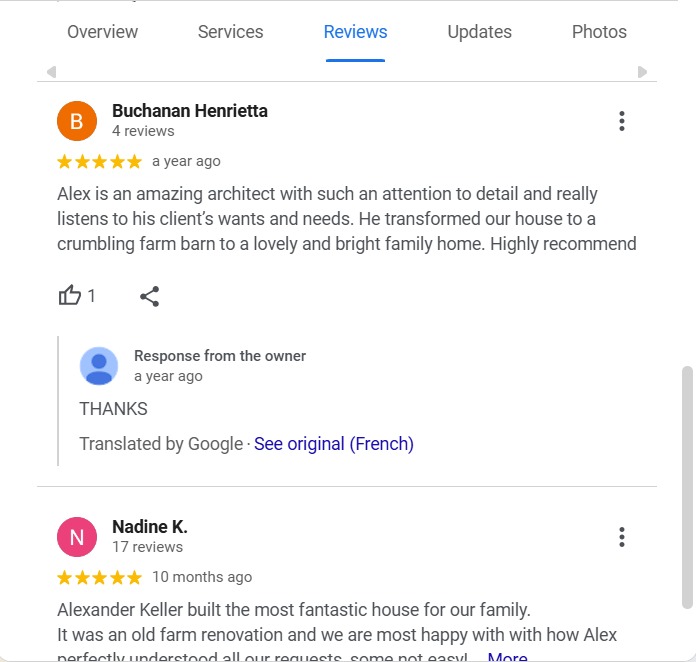
- Influencer Collaborations: Collaborating with influencers can significantly enhance the visibility and credibility of interior designers and architects by showcasing real experiences to a wider audience. Influencers, especially those with a focus on home decor, lifestyle, or architecture, have built a loyal following that trusts their opinions and recommendations. When these influencers share your designs, services, or products with their audience, it’s perceived as a genuine endorsement rather than a traditional advertisement, making the message more relatable.
These collaborations often involve influencers creating content highlighting their personal experiences with your brand, such as a home renovation, a room makeover, or a design consultation. By sharing behind-the-scenes looks, before-and-after transformations, and honest feedback, influencers can demonstrate the value of your services in real-world settings. This approach helps potential clients visualize how your expertise could benefit them and builds a connection through the influencer’s storytelling.
Basic technical SEO
Organize Your Site: Structure your website so that all pages are reachable within three clicks. An organized site helps potential clients find key services like portfolio, testimonials, and design styles quickly, improving user experience and potentially increasing time spent on the website.
Use SSL: Ensure your site has a Secure Sockets Layer (SSL) to protect your data. SSL encryption builds trust with clients who may share personal information or inquire about design consultations, contributing to a more secure and trustworthy site.
Fix Broken Links: Regularly check for and repair or replace any broken internal or external links.
Submit a Sitemap: Enhance your technical SEO by submitting a sitemap to improve site navigation. A sitemap is a file that lists all the pages on your website, providing search engines with a roadmap of your site’s structure helps ensure that search engines can discover and index all relevant content on your site, which can lead to better visibility and improved SEO performance.
Hire Experts: SEO professionals can help optimize technical aspects like canonical tags to prevent duplicate content and improve the site’s visibility for local and international searches. Contact us today to learn more about how we can help you with technical SEO!
Local SEO Tips for Interior Designers
Optimizing local SEO is essential for interior designers looking to attract clients in specific areas. Here are some key tips to improve your local search presence:
- Claim and Optimize Your Google Business Profile: Ensure your Google Business profile (GBP) is claimed, verified, and fully optimized with accurate business details, such as your address, phone number, business hours, and services offered. Regularly update your profile with photos of your work, posts about your latest projects, and prompt responses to customer reviews to improve your local visibility.
- Use Location-Specific Keywords: Incorporate location-specific keywords, such as city or neighborhood names, into your website’s content, meta tags, and headers. This helps search engines associate your services with specific areas, making it easier for local clients to find you when searching for interior design services near them.
- Create Location-Specific Content: Develop content that speaks directly to your local audience, such as blog posts about local design trends, case studies of projects completed in the area, or guides to sourcing materials locally. This not only helps establish your expertise within your community but also improves your chances of ranking for local search queries.
- Leverage Local Backlinks: Seek opportunities to gain backlinks from local websites, such as local news sites, blogs, or business associations. Participating in local events, sponsoring community activities, or collaborating with local businesses can also provide valuable backlink opportunities that boost your site’s local authority.
- Use Local Schema Markup: It is a powerful tool for interior design businesses aiming to enhance their online visibility. By implementing schema markup, these businesses can provide search engines with structured data about their services, reviews, and projects. This enhanced data helps search engines understand and display rich snippets, such as star ratings, service details, and project images, directly in search results
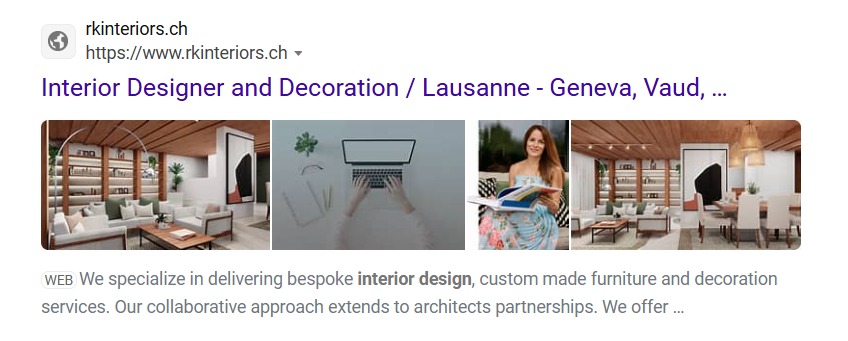
Measuring SEO Efforts
Measuring SEO efforts for interior design SEO involves analyzing various metrics to gauge the effectiveness of your strategies and make data-driven improvements. Key performance indicators (KPIs) to track include:
- Organic Traffic: Monitor the volume of traffic coming from search engines to your website. An increase in organic traffic often signifies improved search rankings and successful SEO efforts.
- Keyword Rankings: Regularly check the rankings of your targeted keywords, such as “interior design,” “home remodel,” and “interior design services.” Tracking these rankings helps you assess the effectiveness of your keyword optimization strategies.
- Conversion Rates: Analyze how well your website converts visitors into leads or clients. High conversion rates indicate that your SEO efforts are attracting relevant traffic and engaging potential clients effectively.
- Bounce Rate: Evaluate the percentage of visitors who leave your site after viewing only one page. A high bounce rate may suggest that your content or user experience needs improvement.
- Backlink Quality and Quantity: Assess the number and quality of backlinks to your website. High-quality backlinks from reputable sources can boost your SEO and credibility in the interior design industry.
- Local SEO Metrics: For interior design businesses focusing on local markets, track local search visibility, Google Business Profile insights, and local citations. These metrics help measure the effectiveness of your local SEO efforts.
Frequently Asked Questions
What should I do if my interior design website isn’t showing up in local search results?
- If your site isn’t showing up locally, check if your Google Business Profile is fully optimized and up-to-date. Make sure you’re using local keywords on your site and gather reviews from local clients. Also, ensure that your website’s location information is consistent across all online platforms.
What kind of content works best for improving SEO on an interior design site?
- High-quality, visually engaging content works best. This includes detailed project showcases, before-and-after photos, design tips and trends, and client testimonials. Videos and interactive content can also boost engagement and improve your SEO.
Can social media help with my interior design SEO efforts?
- Yes, social media can complement your SEO efforts by driving traffic to your website and increasing brand awareness. Share your latest projects, design tips, and blog posts on platforms like Instagram and Pinterest to engage with potential clients and boost your online presence.
Where do interior designers advertise?
- Interior designers can effectively advertise through a mix of online platforms, such as their own website, social media, and design directories; local advertising, including Google My Business and local publications; networking and referrals from industry associations and satisfied clients; paid advertising via search engine and social media ads; and collaborations with realtors and furniture stores.
How to get leads for interior design business?
- To generate leads for your interior design business, optimize your website for search engines, leverage social media to showcase your work, list your services on online directories, network at local events, offer free consultations, implement referral programs, and run targeted ads. These strategies will help attract and convert potential clients. You can also collaborate with influencers to promote your business by sharing their real experience with their followers.
Ready to elevate your online presence and drive more leads for your interior design, roofing company, or architectural business? Contact SEO Transformer today to discover how our expert SEO audit and strategies can help you achieve your goals. Let’s work together to enhance your visibility and grow your business. Contact us now!
Lorem ipsum dolor sit amet, consectetur adipiscing elit. Ut elit tellus, luctus nec ullamcorper mattis, pulvinar dapibus leo.
Lorem ipsum dolor sit amet, consectetur adipiscing elit. Ut elit tellus, luctus nec ullamcorper mattis, pulvinar dapibus leo.



